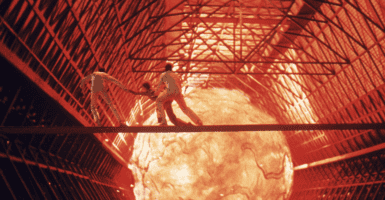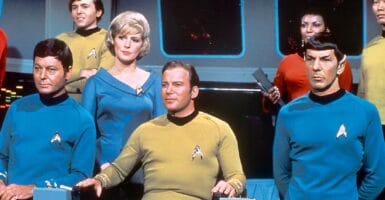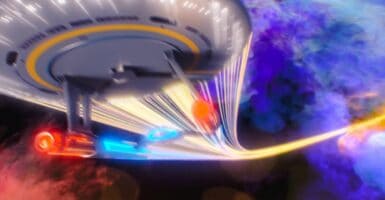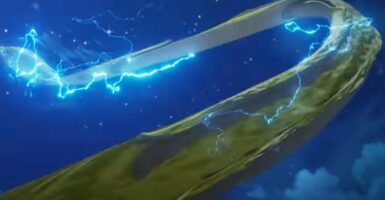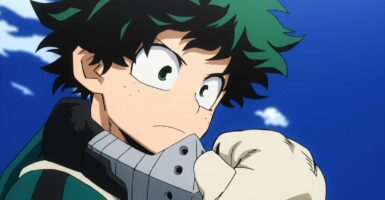The Sci-Fi Master Whose Work Has Been Ignored By Hollywood, And That Needs To Change
Robert A. Heinlein is one of the great sci-fi masters, but Hollywood ignores him.
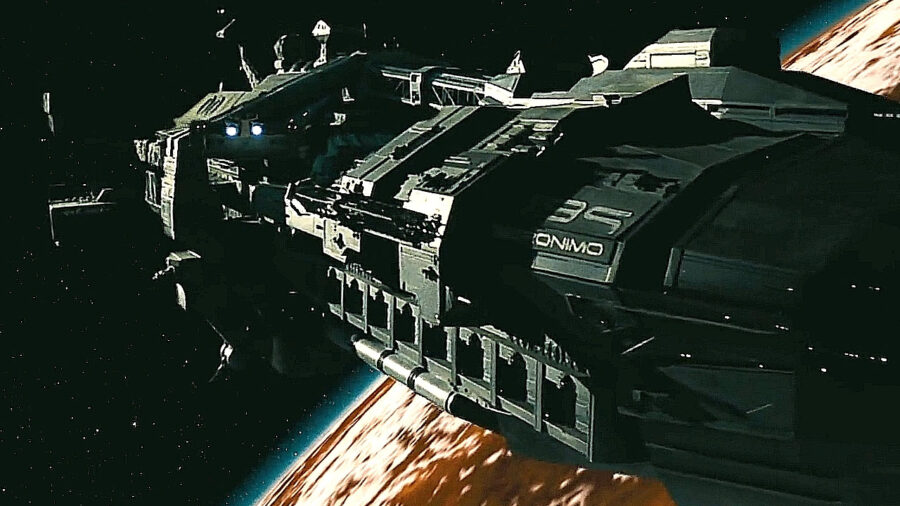
Hollywood has had an ongoing love affair with the works of Phillip K. Dick for decades now. Sometimes it’s a healthy relationship, giving us masterworks such as Blade Runner. Sometimes it’s downright abusive when it produces flicks like Screamers or Paycheck. And sometimes it splits the difference and serves up enjoyable silliness such as Total Recall.
Still, as many times as the movies have returned to Dick’s catalog, you’d think he was the only SF writer out there. We all know better, of course, and pretty much any SF fan has their dream list of books they’d love to see brought to the silver screen.
If Hollywood really wants to freshen things up, they should take a closer look at the work of Robert A. Heinlein.
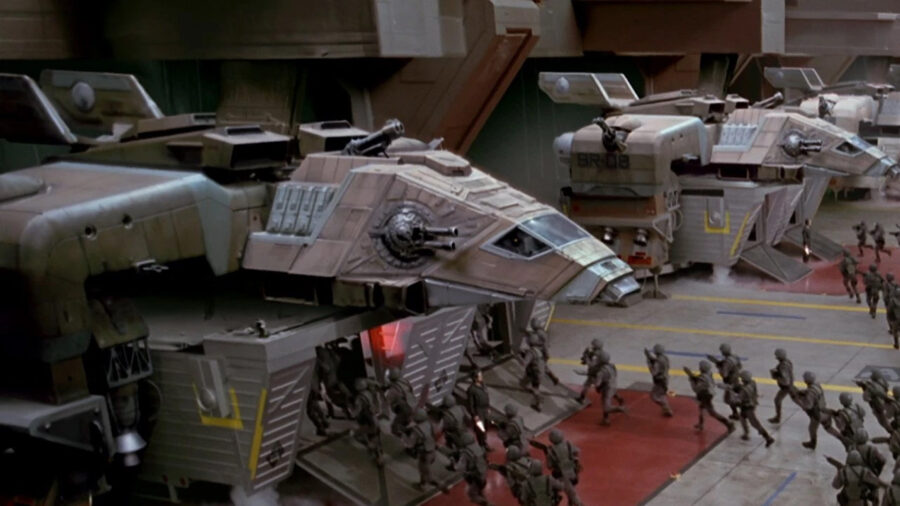
The most notorious Hollywood production of a Robert Heinlein novel is Paul Veerhoven’s Starship Troopers flop from the 90s. While that movie is actually great, it bears almost no resemblance to the novel on which it is supposed to be based.
It’s almost as if Starship Troopers has scared Hollywood off Heinlein entirely. Producers have been kicking around the idea of adapting some of Heinlein’s best-known works such as Stranger in a Strange Land or The Moon Is a Harsh Mistress for years, but it’s going nowhere and that’s the wrong approach. Instead, they should put some of that possible production attention on Heinlein’s “juveniles.”
Ostensibly written for young readers during the 1950s, any of these books could make for an amazing, all-ages big-screen adventure.
The Star Beast
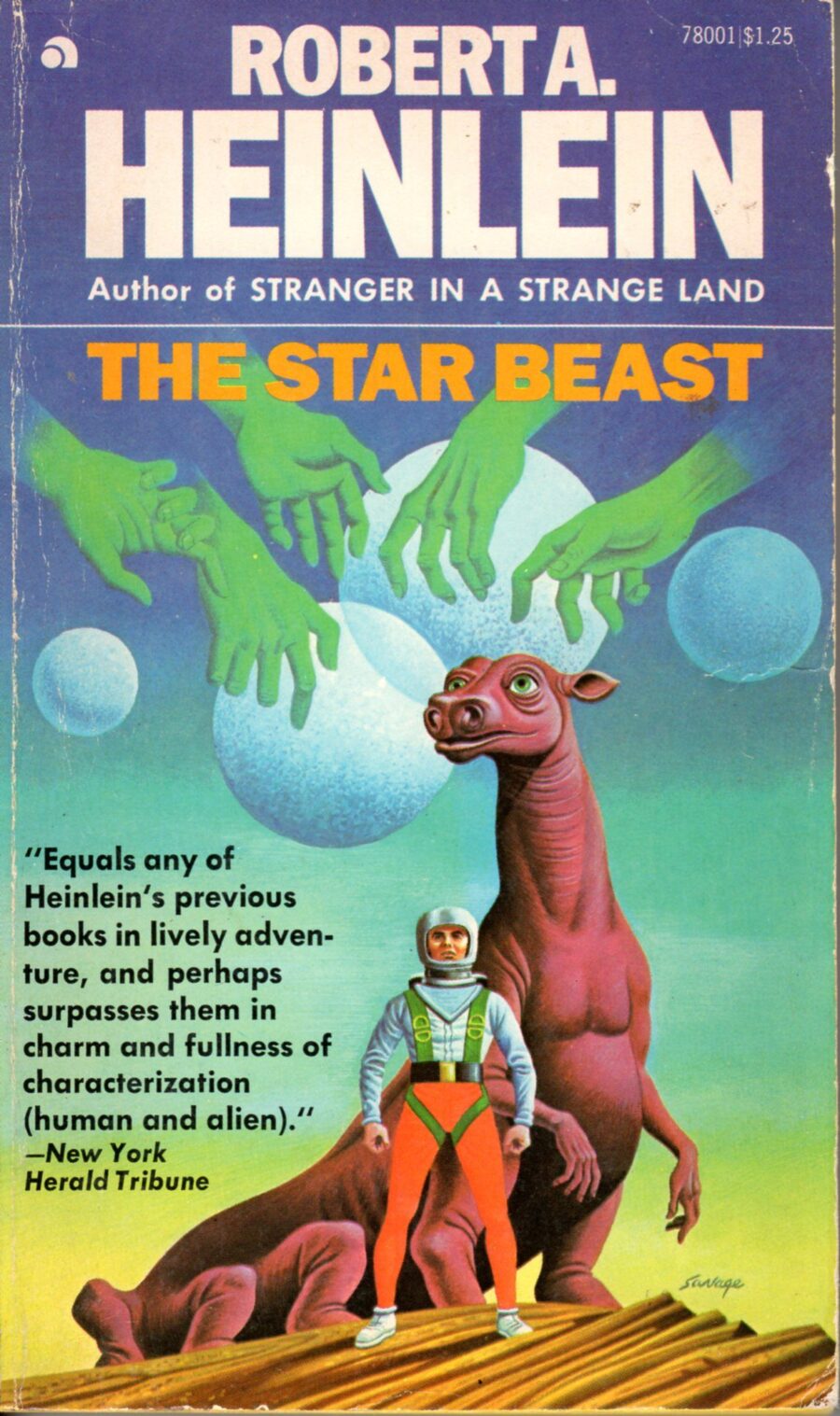
Written in 1954 The Star Beast was probably intended to be the youngest of Robert A. Heinlein’s young adult novels, but even Heinlein at his most juvenile is more adult than just about anything you’ve seen in Hollywood’s movie theaters recently. It’s the story of a boy and his friend Lummox, an alien pet who isn’t actually a pet and ends up taking his human on an adventure to escape from nefarious forces and reunite with his family amongst the stars.
Think of this as a cross between E.T. and Flight of the Navigator and you’ll get the kind of high-flying, young-adult adventure a movie version of The Star Beast should be shooting for.
We stopped making movies about friendly aliens a couple of decades ago. How many more alien attack movies do we really need? The Star Beast would be a great way to bring things back to a hopeful future where every alien we meet doesn’t necessarily want to kill and eat us (though Lummox is only too happy to eat just about everything else).
Have Space Suit — Wil Travel

In 1958’s Have Space Suit — Will Travel, Clifford “Kip” Russell enters a jingle-writing contest hoping to win a trip to the Moon. Instead of the grand prize, he gets a beat-up, obsolete space suit.
Kip repairs the suit but decides to be responsible and sell it to pay for college. Taking one last walk in the suit, he broadcasts over the suit’s radio…and receives a response. Before he knows what’s happening, Kip gets a trip to the Moon after all…as a captive of a nasty alien crew he nicknames “Wormfaces,” and in the company of a preteen genius girl called Peewee and a benevolent alien named the “Mother Thing.”
By the time Kip’s journey is over, he’s been to Pluto and beyond, eventually speaking in defense of all of humanity before a galactic tribunal determining whether or not mankind is a danger that should be exterminated. Have Space Suit is a rousing all-ages adventure, and if done right the Mother Thing could be a cinematic marvel on the order of The Lord of the Rings‘ Gollum.
While the book was set in a universe where space travel within our system was established, you could easily reset it in the “not too distant future” and have Kip acquire the suit in a less dated way than the jingle contest.
Tunnel In The Sky
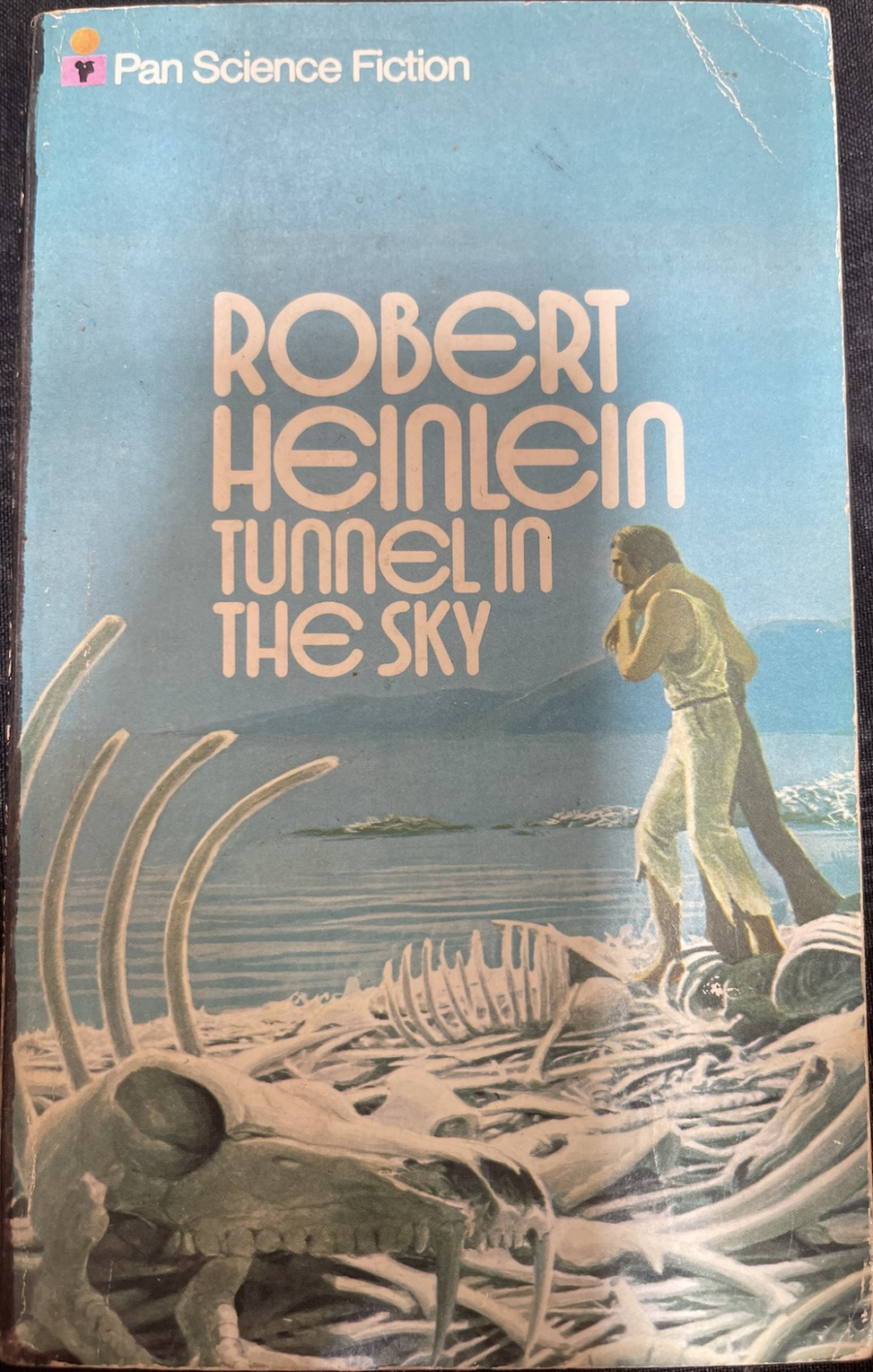
Think Lord of the Flies with alien monsters and college students and you’ll have Tunnel in the Sky. Heinlein’s 1955 novel is about a group of college students who are sent on a ten-day-long survival mission to an alien planet. At the end of their week, the door that took them there is supposed to open and allow them to go home. They spend their time on what amounts to a mostly uneventful camping trip and when their days are up…the door doesn’t open. With no way home they must find a way to survive for years in a rugged alien environment that rapidly changes from uncomfortable to deadly and dangerous, as group dynamics shift and they struggle to build a society in a place they’d never intended to do more than simply visit. Tunn is unexpectedly brilliant, a taut battle for survival against impossible odds. It’s a deep examination into the nature of human relationships and systems of governments as the characters in its story struggle to build a society from scratch.
Red Planet

Red Planet is, in some ways, a twist on the age-old story of a boy and his dog. In this case the dog is Willis, a small native Martian creature known as a “Bouncer.” He’s the pet of Jim Marlowe, a young student attending a prestigious boarding school on Mars.
One day, Jim and Frank learn of corruption on the part of the colonial administrator, who plans to cancel the colony’s annual migration in order to save money, which will place the colonists in danger during a harsh winter. The boys travel cross-country to try and warn the colonists.
What follows is a mix of road trip and good old-fashioned rebellion as the colonists try to foil their corrupt leaders and forge their own destiny. To avoid some of the anachronistic problems that plagued John Carter, Red Planet could easily be relocated to a different Mars-like planet without affecting the story much at all.
It’s got the strange-pet setup of Gremlins, the kids-versus-grownups conflicts of Goonies, and a great mystery surrounding the native Martians and their relationship to Willis. (Red Planet was adapted into an animated miniseries during the ’90s, but it’s never been a movie.)
The Door Into Summer

This 1957 Robert A. Heinlein novel is one of his most clearly written expressions on the value of free-thinking individualism. His lead character is a resourceful, do-it-himself engineer named Dan Boone who builds a robotics company and, when betrayed by his partners, ends up trapped and frozen in a new cold-sleep facility.
He’s unthawed decades later and must then try and rebuild his life in a strange future where he has nothing. Dan rises and falls again, ends up in a nudist colony, and eventually decides to go even further into the future, looking for a way to reclaim what he’s lost.
The story’s complex and not easily adapted, but Hollywood loves time travel and here it’s used for more than cheap thrills. Door into Summer has something to say about individuality, invention, and freedom of expression. This one, adapted properly, could be more than just cheap summer thrills
Citizen of the Galaxy

One of my favorite books growing up, 1957’s Citizen of the Galaxy tells the story of Thorby, a young slave who is bought by a mysterious old beggar named Basil. Treating Thorby like a son, Basil trains the boy not just in begging, but in mathematics, languages, and history.
As he is sent on errands all over the city, Thorby begins to learn that there is more to his master than meets the eye. After Basil is murdered by local authorities, Thorby tracks down a starship captain Basil told him about and passes on the message the old man made him memorize.
The captain, having owed Basil an old debt, adopts Thorby and takes him aboard to learn the ways of the Free Traders. Thorby rises in the ranks, joins the Terran military, and eventually begins to discover the secrets of his true heritage.
Learning more about both his own past and that of Basil, Thorby resolves to fight the slave trade in any way he can. Stretching from Thorby’s Oliver Twist-like beginnings up through the complex world of the Free Traders, and eventually into the world of corporate intrigue, it’s a great rags-to-riches story.
Moreover, by examining a futuristic society that includes slavery, a Citizen of the Galaxy movie could comment on many of our own time’s foibles and prejudices.
Time For The Stars

First published in 1956, Time for the Stars posits a future where we discover that twins have the ability to communicate with each other telepathically. When humanity plans a years-long mission to colonize other planets in the depths of space, twins are their only means of communication, and two brothers named Tom and Pat Bartlett are separated and sent on different paths.
Tom embarks on the long mission to colonize space while Pat stays behind to receive his signal. Because of the rigors of space travel time moves more slowly for Tom, and as they communicate back and forth Pat begins to grow old while Tom stays young as ever.
Their lives are contrasted as they talk endlessly. One travels the stars on a mission struggling to survive and battling mutiny and dangers untold, while the other grows old wondering what might have been.
It’s the humanity here that makes this story worth telling, but the outer-space elements add an element of blockbuster allure. Time for Stars has it all

